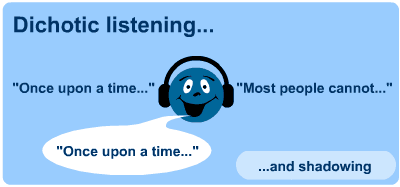Information processing and attention

3.Information processing and attention Focused or selective attention refers to the mechanism by which certain information is registered while others are rejected. Capacity or divided attention refers to the upper limit of the amount of processing that can be performed on incoming information at any one time. Many studies of attention have used auditory tasks. Dichotic listening refers to feeding one message into the left ear and a different message simultaneously into the right ear. Participants have to repeat one of the messages aloud. This process is called Shadowing (first used by Cherry). This is a method to study selective attention. Divided attention can be tested using a dual-task technique whereby the individual is asked to attend and respond to both or all incoming messages. ...